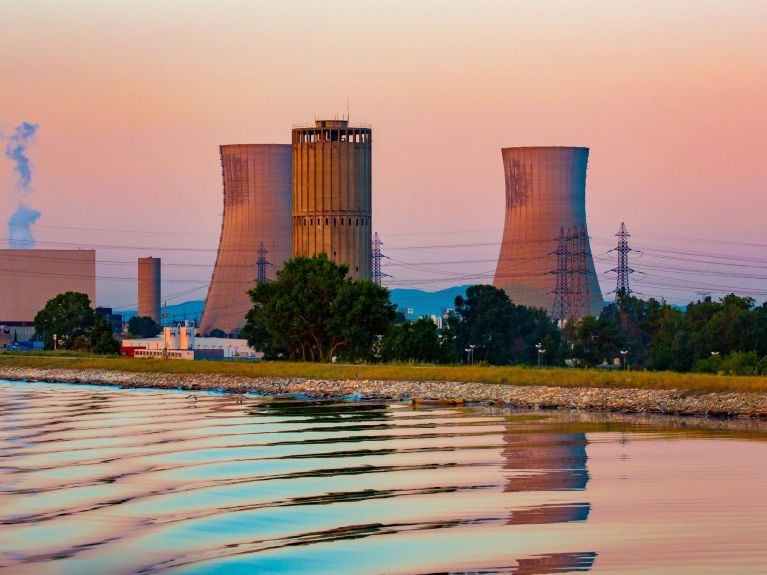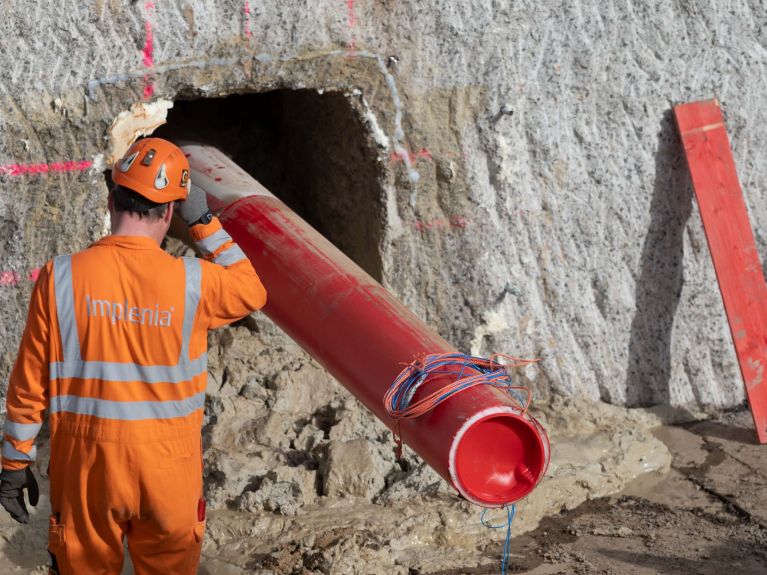European cooperation for the energy transition
The European Union is investing in the expansion of renewable energies. Joint projects pursued by its member states and close cooperation play a key role in this.

The energy transition is regarded as the key to a climate-resilient future. Current scenarios compiled by the International Energy Agency (IEA) show that the impacts of climate change can only be mitigated by rapidly switching to renewable energy supply sources. The European Union has made this the basis of its energy and climate policy and wants to make Europe the first climate-neutral continent by 2050 at the latest. To achieve this goal, the expansion of wind turbines and solar power must be massively accelerated. However, new power grids, terminals, ports and pipelines will also need to be built if a green hydrogen-based economy is to be established. Because the EU is a single market and many of the projects transcend national boundaries, cooperation between the 27 member states is essential.

Cooperation with France
A crucial role will be played in particular by the cooperation between France and Germany. This is regarded as the core element of and driving force behind European cooperation. Both countries are pursuing different national energy strategies. France is relying heavily on nuclear energy, whereas Germany recently completed its nuclear phaseout and has now shut down its last three nuclear power plants. Such differences pose no obstacle to a close dialogue on energy issues, however. At the regular Franco-German Energy Forum for example, experts and decisionmakers from both countries discuss how best to ensure the success of the central project in Europe’s joint energy transition. The discussion format was initiated by the governments of Germany and France as early as 2006.
“The energy transition is a project that impacts all economic and social aspects of our world and cannot be achieved unilaterally,” says Sven Rösner, director of the Franco-German Office for the Energy Transition. The Energy Forum organises the information and network platform jointly with Germany’s Federal Foreign Office and Federal Ministry for Economic Affairs and Climate Action, as well as with the French Ministry for Ecological Transition.
The final piece of the puzzle: hydrogen
The most recent meeting in October 2023 was devoted to the subject ofhydrogen. “Hydrogen is the missing piece of the puzzle in the energy transition,” says Rösner. In future, it is to be used - in the least carbon-intensive form possible - in those areas that are very difficult to electrify, such as heavy industry. As yet, the hydrogen economy is still at a very rudimentary stage. The EU, and 16 member states including France and Germany, have already adopted their own hydrogen strategies to accelerate its implementation. France intends to invest nine billion euros by 2030. Germany has just decided to build a core hydrogen network covering 9,700 kilometres. Their joint goal: to make Europe a leading continent when it comes to the entire hydrogen value chain.
Concrete cross-border projects are already being planned. A large-scale hydrogen network is to be established in the Saarland-Lothringen-Luxembourg region, for example. A hydrogen pipeline is planned between Barcelona and Marseille, with Germany also to be linked to the project.

Double the share of green energy by 2030
By 2030, the European Union wants to nearly double the share of renewable energies compared to today’s levels. For this to happen, the speed at which new windand solar power plants are being expanded must be stepped up considerably. The construction of high-voltage lines also needs to be accelerated so that the green electricity can be transported to the consumption centres. The West Coast Line in the state of Schleswig-Holstein is one of these vital projects for the European energy transition that went into operation recently. This 140 kilometre-long power line strengthens the cross-border power supply system along the west coast between the Elbe River and the Danish border. The guiding vision is: “Strengthen the local grid, integrate wind and solar power, secure supply.” By 2025, the new overhead line, which carries a voltage of 380 kilovolts, is also to be connected to the grid in Denmark. One of the objectives is to increase the transmission capacity between Germany and Denmark.
According to the transmission system operator Tennet, which built the line, increasing numbers of wind turbines can now produce power in the region. Previously, Schleswig-Holstein’s existing power grid had already reached the limits of its capacity. Because more wind power is often produced in the state than is actually needed, wind turbines frequently have to be shut down because the grid is unable to absorb their electricity. Such shutdowns entail considerable costs. Thanks to the new West Coast Line, the number of shutdowns is now falling, says Tennet - a success on the path to the energy transition.

